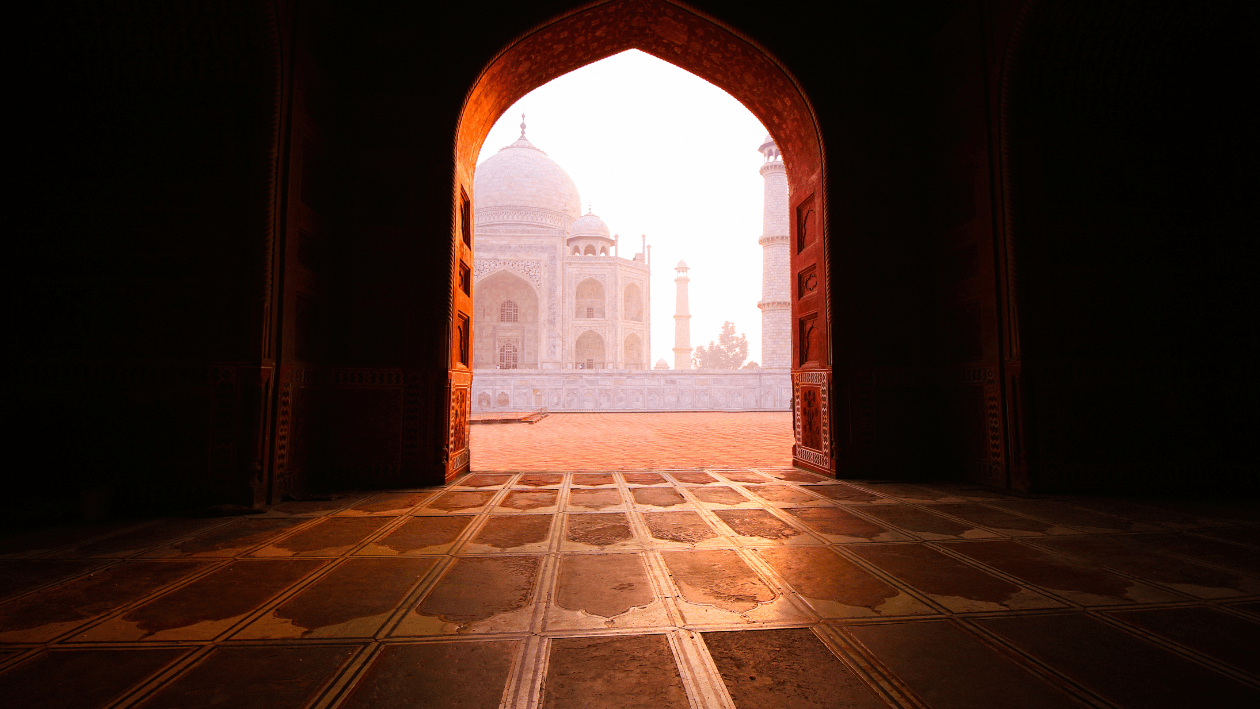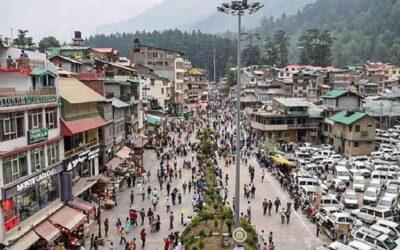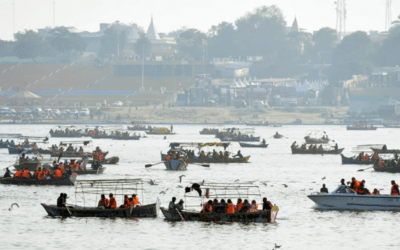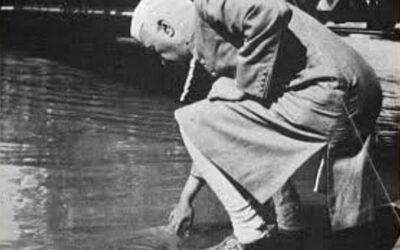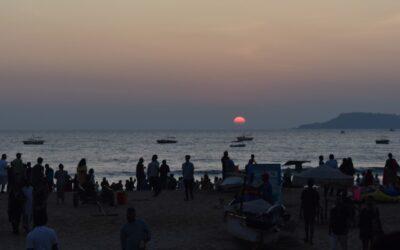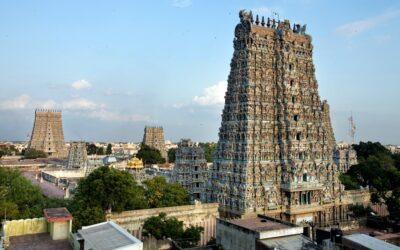The Complete Guide To Visit Agra Fort
Agra, Uttar Pradesh, features various monuments that wonderfully depict the Mughal Empire. The Taj Mahal, Fatehpur Sikri, and Agra Fort are the most well-known among them. The beautiful Agra Fort is a fort with a unique history, being formerly known as Badalgarh. This fort is special since every Mughal ruler from the time of its creation to the year 1638 resided there at least once.
This fort’s outstanding architecture and historic richness make the Agra Fort worth visiting. We have gathered all the details about the Agra Fort you might need to know while taking a trip here.
BEST TIME TO VISIT
The ideal travel season is from October to April. The weather will be pleasant, and no clouds will make for leisurely sightseeing. Most visitors to the Agra Fort want to go there in the evening so they can stay for the light and sound show.
The fort is open daily from morning to evening. Early in the morning or just before sunset are the finest times to visit the fort to see how the sun affects the fort’s walls. Winter or the first few months of summer are the finest times to visit the fort.
THE AGRA FORT’S ATTRACTIONS
The Red Fort in Agra is a collection of palaces and monuments built throughout history by various emperors at various times. Inside the Agra Fort, some of the top attractions are as follows:
JAHANGIR PALACE
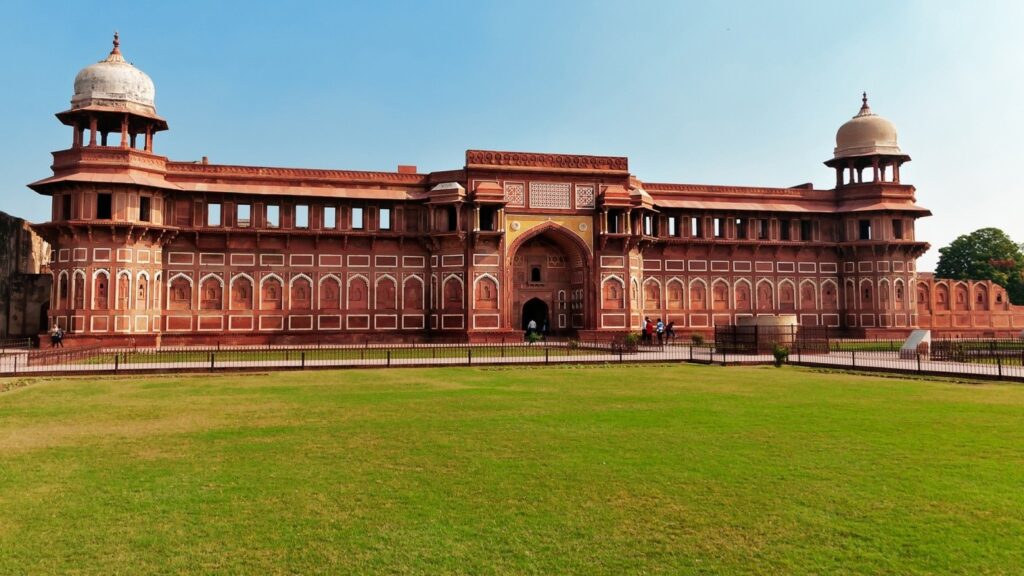
One of the fort’s most impressive spots, Jahangir Palace is promptly accessible as you pass through the Amar Singh Gate. The palace Akbar built for his son Jahangir is adorned with exquisite architectural details. Here, a magnificent doorway opens to a courtyard inside that is surrounded by huge rooms decorated with elaborate stone carvings on the piers, brackets, and crossbeams.
MUSAMMAN BURJ
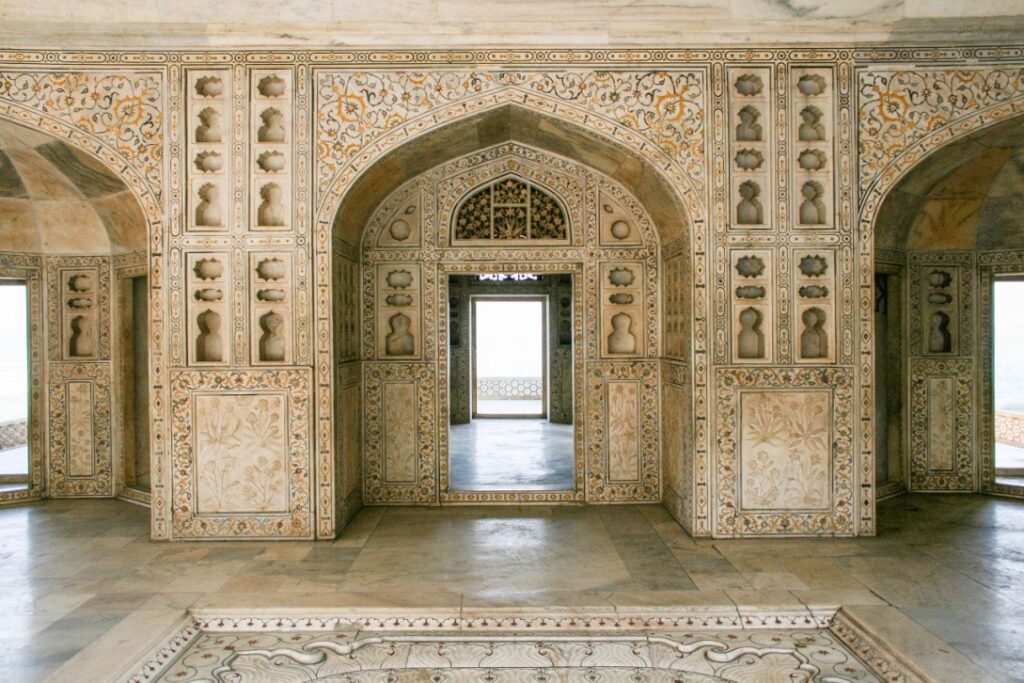
Musamman Burj, sometimes referred to as the octagonal tower, is the most charming pavilion inside the Agra Fort. Mumtaz Mahal, the primary queen of Shah Jahan, and Nurjahan, the primary queen of Jahangir, both resided in this stunning and powerful location during the Mughal era. The octagonal tower’s beautifully decorated interior offers the ideal viewing point for seeing the Taj Mahal.
KHAS MAHAL
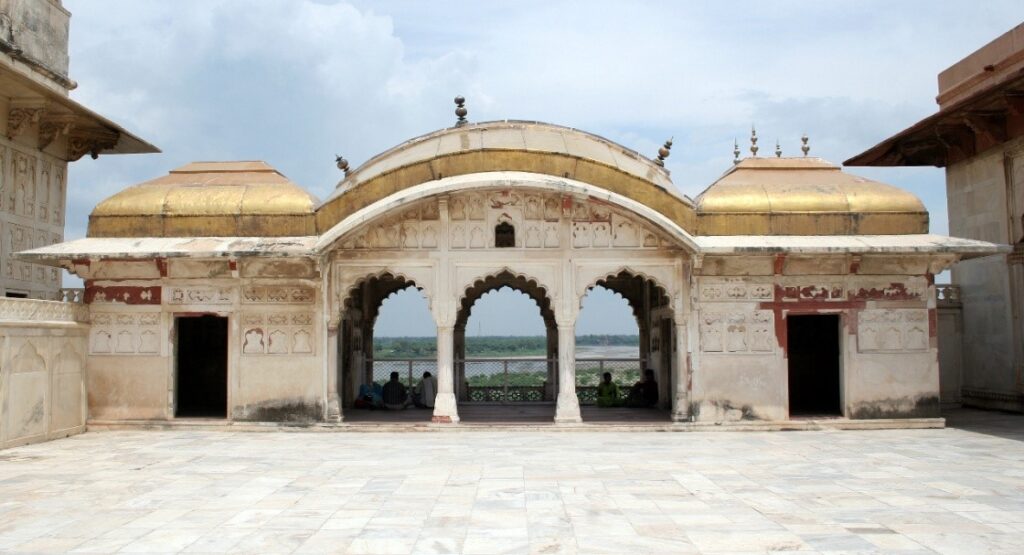
Shahjahan built the palace known as Khas Mahal for his wife Mumtaz Mahal in a distinctive fusion of Islamic and Persian architecture. The palace’s inner walls are embellished with diamonds, gold, and priceless stones. The unique building known as Khas Mahal provides a peek at the finely crafted Angoori Bagh. Significant architectural features of the palace include ceiling artwork, fountains, and latticework.
DIWAN-I-KHAS

Built by Akbar and improved by Shah Jahan, the Diwan-i-Khas has incredible artwork throughout its construction, including Persian-style ornamental pieces, floral themes, and marble carvings. The fabled Shah Jahan Peacock Throne formerly sat in Diwan-I-Khas. The peacock throne, later looted out of India, was decorated with numerous precious stones and the Kohinoor diamond.
SHAHJAHANI MAHAL

This monument, a combination of sandstone and marble, was possibly the first one that Emperor Shah Jahan altered inside the Agra Fort. Though the monument was initially built of sandstone, it was later redone in white marble. Hiring a guide for the Agra fort can help you learn more about the significance of each fort monument if you enjoy delving deeply into time and history.
SHEESH MAHAL
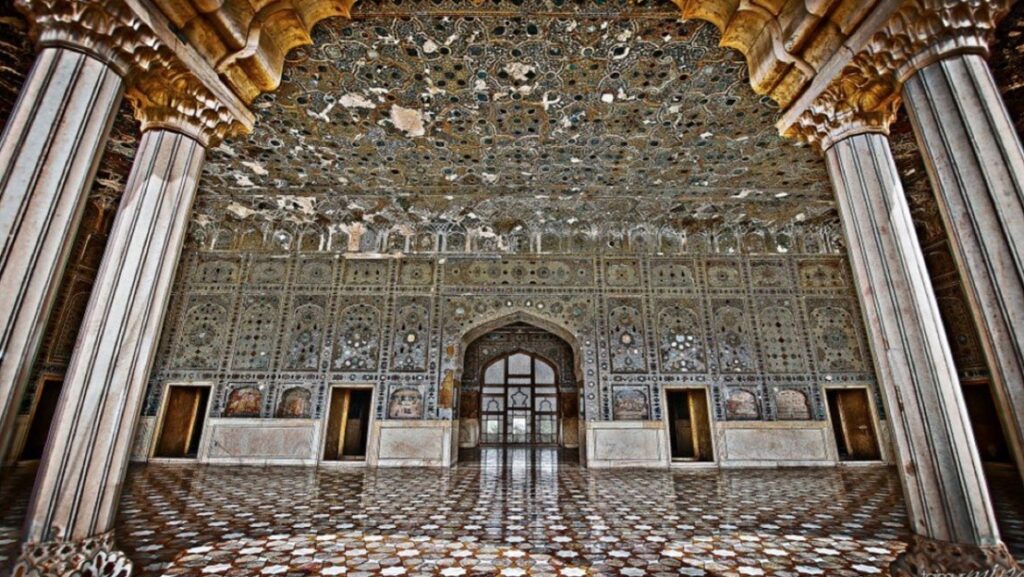
Sheesh Mahal, also known as the Mirror Palace, is the best example of water engineering and hammam architecture since it is entirely made of reflective surfaces. The palace draws tourists in with its beautiful carvings and elaborate wall mirror works, the best examples of India’s glass-mosaic art. During the Mughal period, the mirror palace is thought to have served as a dressing room or harem.
JAHANGIR’S CHAIN OF JUSTICE
For his brilliant use of the “Chain of Justice,” Jahangir became renowned. There are 60 bells tied to this enormous gold chain. To enable people to receive justice all over the reign, the Mughal Emperor had it put on the wall of his palace. People who wanted justice would come here, shake the chain to make a huge sound, and make their complaints heard. It was the Mughal dynasty’s procedure for managing complaints.

NAGINA MASJID

Nagina Masjid, located inside the Agra Fort, is a mosque built by Shah Jahan for the Royal family’s women. The Nagina Masjid, the Jewel or Gem Mosque, was built entirely from pure white marble. The mosque has an elementary layout but includes unique components, such as three royal domes and majestic arches. During the Mughal era, it served as a personal house of prayer.
BENGALI MAHAL

Bengali Mahal was a large palace with curved or Banglauar chhajjas that was constructed by Akbar and then renovated by Shah Jahan. Supposedly, this palace conceals a number of concealed structures beneath its surface. The northern portion of this palace, which splits it into two pieces, was also the site of other palaces created by Shah Jahan, notably Jahangiri Mahal and Akbari Mahal.
HOW TO REACH AGRA FORT?
Following are some ways to get to the Agra Fort:
● BY ROAD:
The Indian capital of Delhi is about 230 kilometers away from Agra, which has excellent transport connectivity. From Delhi, bus service, taxi, and cab services are fairly accessible, and buses are the most affordable method to travel to Agra. It will just take four hours to get here.
● BY AIR:
Indira Gandhi National Airport in New Delhi, at a distance of 240 kilometers from Agra, is the closest airport. Although there is Pandit Deen Dyal Upadhyay Airport in Agra, it is largely meant for military aircraft.
● BY RAILWAYS:
Train service to Agra is good. Agra Fort and Agra Cantt stations are both used by several trains. It is simple to arrange a train from Delhi to Agra, and the trip will only take 4 to 5 hours. The most affordable method of travel to Agra is via train.
THE BOTTOM LINE
You will be mesmerized by the palace, museum, and heritage site that make up Agra Fort, which is more than simply a fort. You will be amazed by the stunning architecture, detailed artwork, and fascinating stories of the historical Mughal emperors who ruled here. So, explore Agra Fort, one of the most gorgeous forts in the world right now!

